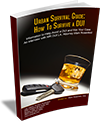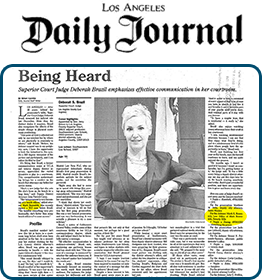A portable breath test, preliminary alcohol screening device or preliminary breath test would typically be done through a handheld breath testing machine. It was originally designed to determine whether or not there was alcohol in a person’s system. The technology has improved and many agencies use portable preliminary alcohol screening devices as a chemical test.
In California, the Title 17 approved test does not have to be given after the person was arrested, although it would often be used by officers in the field when making arrest decisions. It could also be used by district attorneys, city attorneys, and expert witnesses in court in an attempt to prove impairment.
A preliminary alcohol screening device might be handheld so it could be used on the scene and it would come back with numbers that would assist in prosecuting someone for driving under the influence. Handheld machines usually do not have the same safeguards or maintenance as a desktop machine would, although some jurisdictions would actually use the preliminary alcohol screening device as the post-arrest instrument.
The test being conducted in the field would test the person at a much closer time to when they were driving, and it would give a more accurate reading of what the person’s breath alcohol or blood alcohol level was at the time of driving. It would, however, come with a host of other problems regarding how breath testing does or does not work, and then there would also be the potential of interfering substances and observation period problems.
Probably the biggest concern with breath testing would be some sort of contamination in the mouth. The machines would typically not have the safeguards of a desktop machine when conducting preliminary breath tests out in the field, and they would not have the delay from the time of drinking.
Officers often administer the tests in violation of Title 17 and the manufacturer’s recommendation, but regardless, the breath test machines are out there. These tests would be voluntary for most people, unless the person was under 21 or on probation. My recommendation would be to avoid them because they might be inaccurate and would just give the prosecution more evidence to use against them later.
What Is the Difference Between the PBT and the Evidential Breathalyzer Test Given at the Police Station?
The difference between a preliminary alcohol screening device, or preliminary breath test (PBT), and the machine used back at the station would come down to maintenance, trustworthiness, reliability, and software. The desktop machines are often much more secure, stable, and better maintained, and they would be less subject to the extremes of being in the trunk of a car, being battered around and being cold at night and hot during the day. Some desktop machines use the same technology as a portable machine and give very similar results.
Typically, the portable breath test machines are fuel cell machines and they do not give an instantaneous result because they have to do a chemical conversion and analysis to get the result. Other desktop machines could be fuel cell or they could be infrared and give a continuous analysis and continuous readings for a period of time as a person blew through a sample chamber.
The desktop machines typically have some sort of protection against something called “Mouth Alcohol,” or contamination. Whether or not those safeguards worked is another question, but desktop models typically have them while handheld models do not.
There are certain timing requirements that may be built into a desktop machine that would not exist on a handheld machine. If someone was looking for an accurate, reliable number, then typically the desktop machine would give a much more trustworthy and accurate number because the instrument would be maintained by a crime lab rather than a police department.
What Factors Can Influence the Reliability of a PBT’s Accuracy and Result?
Breath testing instruments are subject to a lot of human variability: how somebody blew into the machine, where someone blew into the machine, when the person had last eaten or drank, what the numbers were, and there might even be radio frequency interference that could affect a breath testing instrument.
The biggest concern that most experts and the industry leaders look for is potential contamination sources, whether that was from the person using the equipment or from the environment where the breath testing machine was placed. It could give wildly inaccurate numbers if there was contamination.
Is the Result of the Preliminary Breath Test Admissible in Court?
Preliminary breath test numbers are usually admissible in court, and prosecutors and police officers have worked together for many years to figure out how to get around the hurdles of the evidence code so they could get these numbers in front of a jury.
Prosecutors love setting up situations where they have preliminary breath test results by the car and then numbers on a blood test or breath test back at the station so they can compare those different data points and conduct an analysis to determine whether or not the person’s blood alcohol level was going up or down or staying the same and what that meant for the time of driving.
The more numbers somebody has, the greater the likelihood the jury would convict them. It would become more difficult to get a not guilty verdict if the person had two blows in the field and two blows at the station, and they were all 0.08 or above.
It would be the perfect case for the prosecution if there were two breath tests out in the field that were 0.08 or above, and two breath tests back at the station that were also 0.08 or above. The person would then have to choose to do a blood test so there would be three different instruments which were all showing 0.08 or above, and that would make it very difficult to fight that case in court. Every case can be defended, although the more numbers the government has to work with, the greater the likelihood they would be able to get a conviction.
For more information on Preliminary Breath Tests, a free initial consultation is your next best step. Get the information and legal answers you’re seeking by calling (310) 424-3145 today.






 Personal Attention
Personal Attention Every criminal case is unique and no attorney can guarantee the outcome of a case. The information on this site is legal advertising and for general information only. Using this site, requesting books, information, consultations or communicating with Attorney Rosenfeld through its site does not form an attorney/client relationship.
Every criminal case is unique and no attorney can guarantee the outcome of a case. The information on this site is legal advertising and for general information only. Using this site, requesting books, information, consultations or communicating with Attorney Rosenfeld through its site does not form an attorney/client relationship.








